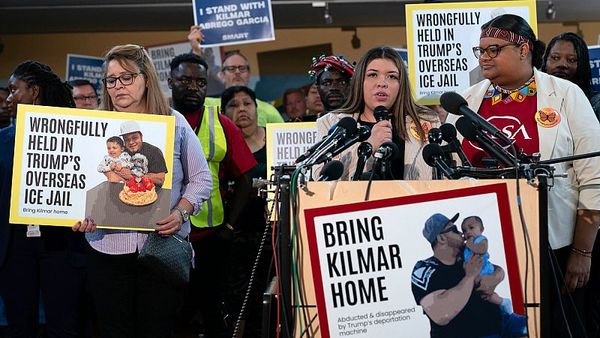To those not fully up to speed with UK politics, the idea of putting someone who retired as an MP seven years ago into a top government job might seem extremely odd. But David Cameron’s elevation to foreign secretary is not without precedent.
How can Cameron be in the cabinet and not in the Commons?
By being made a peer. The Downing Street announcement of Cameron’s job said that the former prime minister was immediately being made a life peer, meaning he will sit in the House of Lords. Theoretically, you can be made a minister without being in either the Commons or Lords, but in practice if a minister is not an MP they will sit in the Lords.
How frequent is this?
In one sense, very. Almost all departments have ministers in the Lords, to answer questions and deal with business in the upper house. However, in modern UK politics these are almost invariably junior ministers.
There is usually only one peer who is a cabinet member: the leader of the Lords, currently Lord True. However, it is not unknown for other cabinet roles to be filled from the upper house. Nicky Morgan stayed on as culture secretary for several months under Boris Johnson after standing down as an MP in the 2019 general election and being made a peer.
Is there a precedent for what has happened with Cameron?
In two senses, yes, but they are rare. Peter Carington was a hereditary peer (where, confusingly, his title was the differently spelled Lord Carrington) who was Margaret Thatcher’s foreign secretary from when she took office in 1979 until 1982, when he resigned to take responsibility for Argentina’s invasion of the Falklands.
Perhaps the closest parallel to Cameron’s return is when Gordon Brown shocked the political world in 2008 by putting Peter Mandelson in the Lords and making him business secretary. Mandelson, not usually an ally of Brown, had quit parliament four years earlier to become the UK’s European commissioner.
Brown was notably prolific on this front, appointing 11 life peers so they could be ministers or government advisers.
How do you work as a cabinet minister in the Lords?
With some difficulty. When the Lords was as powerful as the Commons, the prime minister was often a peer, but the last one was Robert Gascoyne-Cecil, the Marquess of Salisbury, who was prime minister three times up to 1902 (Alec Douglas-Home renounced his peerage after becoming PM in 1963).
Cabinet ministers are subject to scrutiny in the Lords, but the upper house works quite differently to the Commons, without the same routine of ministerial updates and urgent questions. In practice, this means that a lot of everyday business will be delegated to whoever is seen as Cameron’s number two – currently this would be Andrew Mitchell, the international development minister.
Will Cameron be subject to full scrutiny?
In the Lords, yes. While the chamber can seem more sedate than the Commons, the breadth of expertise among peers can make ministerial questions a tricky experience. Additionally, as foreign secretary, Cameron will be expected to do the usual round of media interviews, allowing journalists to quiz him about not just his day job, but tricky subjects such as the Greensill lobbying scandal and his record as prime minister. It could be interesting.
• This article was amended on 13 and 14 November 2023. An earlier version included a picture of James Cleverly but omitted his new cabinet role, which is home secretary. Also, the last prime minister to lead a government from the House of Lords was Robert Gascoyne-Cecil, the Marquess of Salisbury; a previous version said it was “Robert Cecil, the Earl of Salisbury”, who had government roles between 1596-1612 but was never prime minister. Text has been added to note that Alec Douglas-Home renounced his peerage after becoming PM in 1963.







